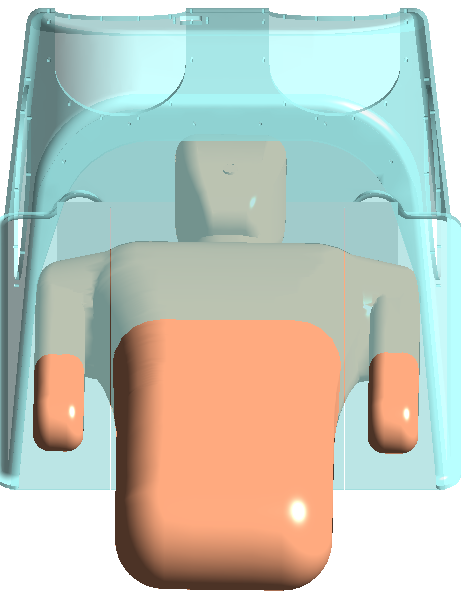Healthcare / Quality improvement
Arup supports development of AGP shield for NHS frontline workers
By Andrew Sansom | 22 May 2020 | 0
Design and engineering firm Arup has used its expertise in modelling how gases move to understand how the virus travels through the air and how best to contain it. The company’s work has helped validate the effectiveness of a protective box to help safeguard frontline healthcare workers, who are at significant risk of catching the infection while treating COVID-19 patients.
Arup’s tunnel ventilation team have lent their expertise in computational fluid dynamics (CFD), normally employed to simulate ventilation systems found in underground road and railway tunnels, to an innovative healthcare design project alongside doctors from the Royal London Hospital, the UK’s Manufacturing Technology Centre (MTC) and Rolls-Royce. It has used modelling techniques to replicate and measure the airflow patterns to reveal the likely trajectory of viral particles from COVID patients within a surgical setting.
These experiments have helped validate the design of the Aerosol Generating Procedure (AGP) shield. The theatre environment collaboration involved Rolls-Royce, Dr Ian Renfrew, a consultant interventional radiologist at Barts, Dr Paolo Perella, an anaesthetic registrar at Royal London Hospital, and support from Innovate UK. The AGP device was manufactured for the containment of viral load. Even with the correct PPE on, it makes much more sense to contain the virus at source using a shield.
Dr Mohammad Tabarra, associate director of Arup, said: “This has been a multidisciplinary, highly organic and innovative collaboration. It’s been great to find valuable applications for our skills on such a vital undertaking.”
By following patient breathing cycles at both normal, passive breathing rates and during episodes of coughing, simulations were able to show how the virus in the air could be contained and removed, with additional work that optimised the location of the air extraction tube inside the shield box. Having the tube standing vertically against one side of the box will maximise the capture of airborne particles, minimising the dispersion of the virus within the larger treatment room, explains Arup. 
Early models were based on assumptions and parameters from initial research by the team. Each iteration was refined with input from medical professionals and design changes to the box itself. The later simulations also discovered that heavier virus particles, similar in weight to water droplets, stick to the top and side surfaces of the box, while the suction tube effectively removes smaller particles. These insights have resulted in improvements to the shield’s effectiveness for both clinical teams and patients alike.
One shield, many uses
The MTC has been receiving requests for a number of the shields, and dozens have already been trialled in hospitals.
In addition to protecting hospital staff, the shield box has the potential to decrease cleaning times between patients, a vital factor to alleviate the consistent pressure on resources in hospitals and intensive care units during the pandemic. Treatments and surgeries not associated with COVID-19 have also been delayed following the outbreak. Implementation of the shield will help staff navigate this backlog effectively and efficiently post-crisis.
Further potential uses for the AGP shield are also being explored, including possible applications in dentistry and endoscopy, as these procedures are often carried out without the full benefit of sophisticated air handling capability found in operating theatres.
Danny McGee, chief engineer at the MTC, said: “On behalf of the MTC, I would like to thank Arup for their continued and rapid support. Bringing their cross-sector simulation knowhow has allowed us to quickly update the NHS medical team on the best possible method of use. The input from Arup has been invaluable and has scientifically validated our latest engineering designs. ”
Organisations involved

